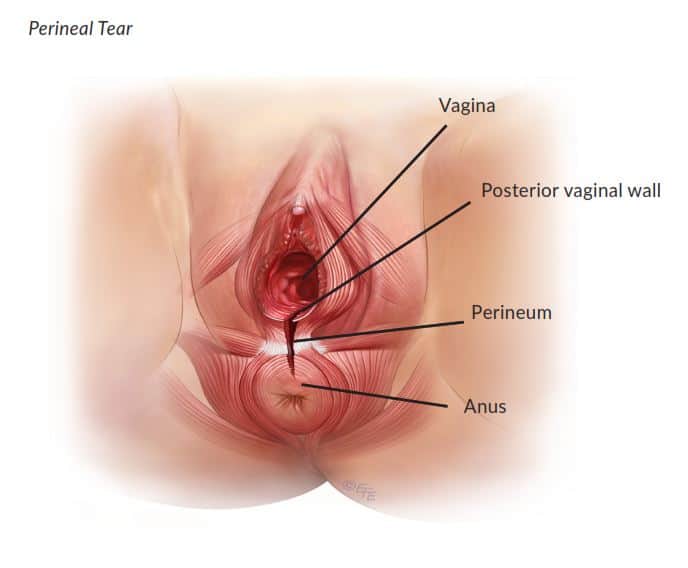What Every Parent Should Know About Third Degree Tear Childbirth
Welcome, dear parents, to your supportive guide on third degree tear childbirth! If you or a loved one has been through childbirth, you may have heard about perineal tears. It’s a topic that isn’t always discussed openly, but it’s an important one, especially if you’re expecting a little bundle of joy! In this comprehensive guide, we will explore what a third degree tear is, how it happens, and most importantly, how to heal and recover from it. So, take a deep breath, and let’s dive into the world of postpartum care with optimism and understanding.
What Is a Third Degree Tear?
First things first, let’s clarify what we mean by a third degree tear. During childbirth, a perineal tear can occur, which is a laceration of the skin and other soft tissue around the vagina and perineum. These tears are categorized into four degrees, with a third degree tear being more significant. It involves not only the perineal skin and muscles but also the muscles around the anus (anal sphincter). We know this sounds quite intense, but with the right care, recovery is absolutely possible and expected!
How Does a Third Degree Tear Occur?
Knowing what might lead to such tears can help in prevention and preparation. Factors that increase the risk of experiencing a third degree tear include delivering a larger baby, having an assisted delivery (with forceps or ventouse), a first-time vaginal birth, and an episiotomy. It is not always preventable, but being aware and working with your healthcare team can lower the risk.
Spotting the Signs of a Third Degree Tear
After delivery, your healthcare provider will examine you for any tears and will identify the degree of the tear. Signs of a third degree tear can include pain, discomfort when sitting, and complications with bowel movements. If these issues arise after you’ve come home, it’s essential to contact a medical professional for further advice.
Professional Care for a Third-Degree Tear
If you or your doctor suspects a third degree tear, medical attention is required. This level of tear is typically repaired in an operating room under local or general anesthesia. Stitches are used, and these usually dissolve on their own over time. You’ll be given instructions on managing discomfort and preventing infection during the healing process.
Recovery and Healing—The Light at the End of the Tunnel
Recovery might seem daunting, but with the right support, you’ll get through it! The healing phase can take weeks to months and involves managing pain, preventing infection, and easing back into normal activities. Pain medication, ice packs, and sitz baths can be helpful. Remember, it’s not just physical care—you need emotional support as well. Lean on your partner, family, and friends.
The Role of Pelvic Floor Therapy
Pelvic floor therapy can be a true lifesaver during your recovery journey. Pelvic floor therapists specialize in the muscles and functions affected by third-degree tears and can provide exercises and techniques to strengthen the area and alleviate symptoms.
Keep in mind, dear parents, that recovery is a personal journey, with each individual’s experience being unique. While we’ve covered a lot, there’s definitely more to discuss. Continue following our guide to understand the steps you can take to ensure a smooth and comfortable recovery process. By staying informed and proactive, you can navigate the postpartum period with confidence and peace of mind.
We understand that this topic might feel overwhelming, but remember, knowledge is power, and you are not alone. The road to recovery may have its bumps, but with patience, proper care, and support, you will find your way back to feeling like yourself again, ready to fully embrace the joys of parenthood.

Five Things Parents Should Know in Preparing for Third Degree Tear Childbirth
1. Educate Yourself on the Birthing Process
Gaining knowledge about the birthing process can help you understand how tears occur. Contact your healthcare provider for resources or partake in antenatal classes to learn more about labor positions, breathing techniques, and the role of perineal massages in promoting elasticity.
2. Discuss Birth Plans with Your Healthcare Provider
Make sure to talk through your birth plan with your obstetrician or midwife. Discuss the possibility of a third degree tear and be informed about the decisions that might need to be made during labor, such as whether an episiotomy is appropriate.
3. Be Mindful of Nutrition and Exercise
A healthy diet and exercise routine can play a significant role in preparing your body for childbirth. Nutrients that can aid in skin elasticity, like vitamins C and E, as well as pelvic floor exercises, can be advantageous for both labor and recovery.
4. Understand Pain Management Options
Being aware of pain relief methods available can be beneficial in managing your comfort level. Options such as epidurals, water births, and breathing techniques can be integral to your birth plan and may impact the likelihood of experiencing perineal tears.
5. Prepare for Postpartum Care
Postpartum care is crucial, especially if a third degree tear occurs. Have a plan for how you’ll handle pain relief, hygiene, and whom you’ll rely on for support to help you recover smoothly.
Relieving Symptoms and Encouraging Healing
A third degree tear can be quite painful and may impact your daily activities for some time. Using prescribed painkillers and over-the-counter medications with your doctor’s guidance can help control discomfort.
In addition, keeping the wound clean is imperative. Gently clean the area with warm water after using the bathroom and pat it dry. Your healthcare provider may also recommend a spray bottle filled with water or a soothing solution to use during bathroom visits.
Rest when you need to and avoid heavy lifting or strenuous activity as your body heals. While it’s important to rest, light movements and walking can improve circulation and promote healing. Consult with your healthcare provider before beginning any activity.
Managing Bowel Movements Post-Tear
Anxiety about bowel movements is common after a third degree tear. Stool softeners may be necessary to avoid straining during bowel movements, which can exacerbate the injury. A high-fiber diet and plenty of water will also help maintain soft stools.
Sexual Activity After a Third Degree Tear
It’s normal to feel apprehensive about resuming sexual activity after experiencing a third degree tear. It’s advisable to wait until you feel physically and emotionally ready. This typically means after your postpartum checkup (usually around six weeks after birth) where a healthcare provider confirms your healing is on track.
Communication with your partner is key. Share how you’re feeling and go slow when you both decide to be intimate again. Lubrication could help make things more comfortable, and varying positions might allow for better control and decreased discomfort.
Recovery from a third degree tear is undeniably challenging, but through collaboration with medical professionals, understanding of the necessary care techniques, and leaning on emotional support from loved ones, healing and a return to daily routines will gradually happen. It’s important to monitor for any signs of improper healing, such as infection or ongoing pain, and to follow up with healthcare providers as needed. Patience and positivity will be your allies on the road to recovery.
See more great Things to Do with Kids in New Zealand here. For more information see here
Disclaimer
The articles available via our website provide general information only and we strongly urge readers to exercise caution and conduct their own thorough research and fact-checking. The information presented should not be taken as absolute truth, and, to the maximum extent permitted by law, we will not be held liable for any inaccuracies or errors in the content. It is essential for individuals to independently verify and validate the information before making any decisions or taking any actions based on the articles.




